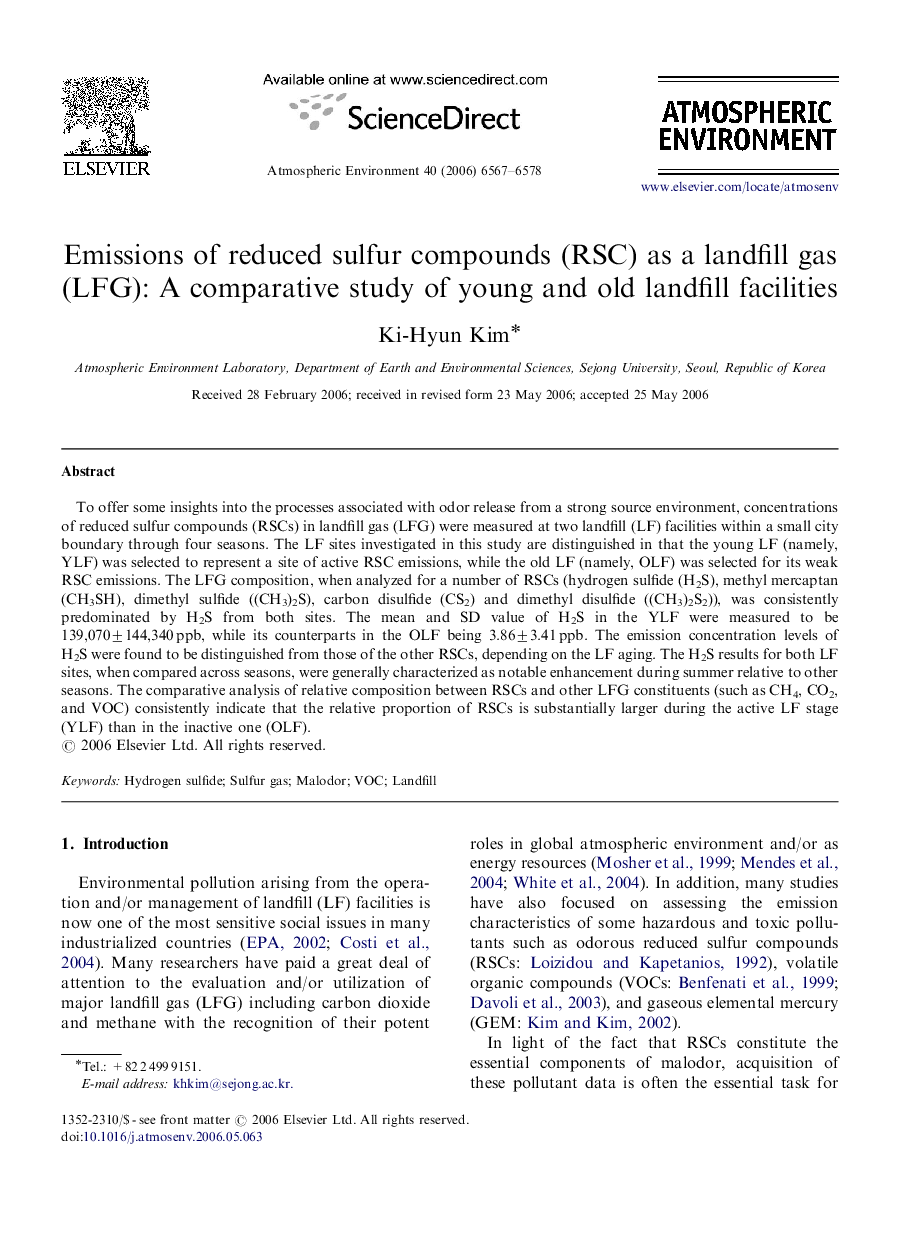| Article ID | Journal | Published Year | Pages | File Type |
|---|---|---|---|---|
| 4443996 | Atmospheric Environment | 2006 | 12 Pages |
To offer some insights into the processes associated with odor release from a strong source environment, concentrations of reduced sulfur compounds (RSCs) in landfill gas (LFG) were measured at two landfill (LF) facilities within a small city boundary through four seasons. The LF sites investigated in this study are distinguished in that the young LF (namely, YLF) was selected to represent a site of active RSC emissions, while the old LF (namely, OLF) was selected for its weak RSC emissions. The LFG composition, when analyzed for a number of RSCs (hydrogen sulfide (H2S), methyl mercaptan (CH3SH), dimethyl sulfide ((CH3)2S), carbon disulfide (CS2) and dimethyl disulfide ((CH3)2S2)), was consistently predominated by H2S from both sites. The mean and SD value of H2S in the YLF were measured to be 139,070±144,340 ppb, while its counterparts in the OLF being 3.86±3.41 ppb. The emission concentration levels of H2S were found to be distinguished from those of the other RSCs, depending on the LF aging. The H2S results for both LF sites, when compared across seasons, were generally characterized as notable enhancement during summer relative to other seasons. The comparative analysis of relative composition between RSCs and other LFG constituents (such as CH4, CO2, and VOC) consistently indicate that the relative proportion of RSCs is substantially larger during the active LF stage (YLF) than in the inactive one (OLF).
